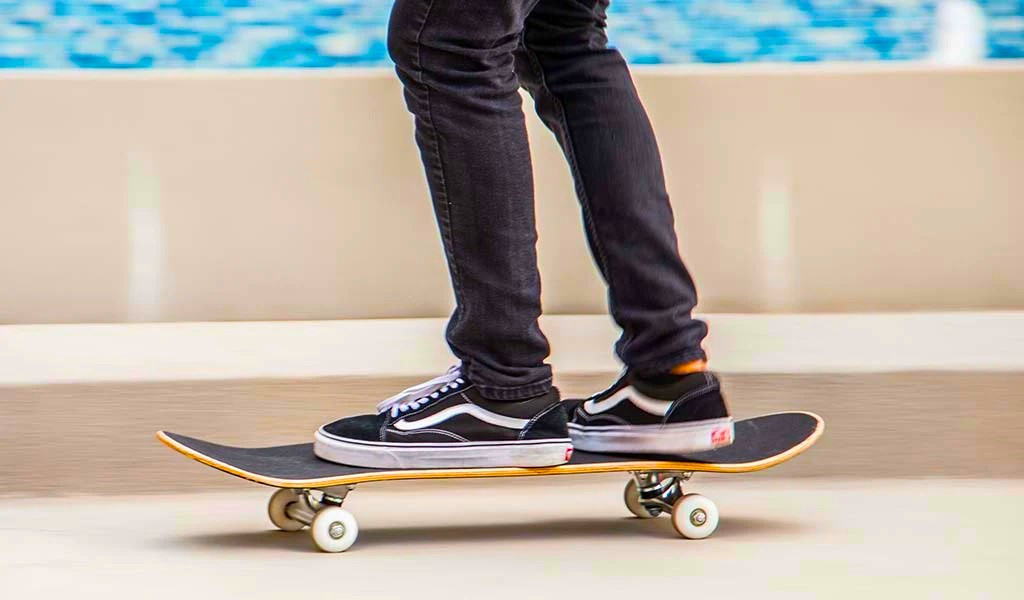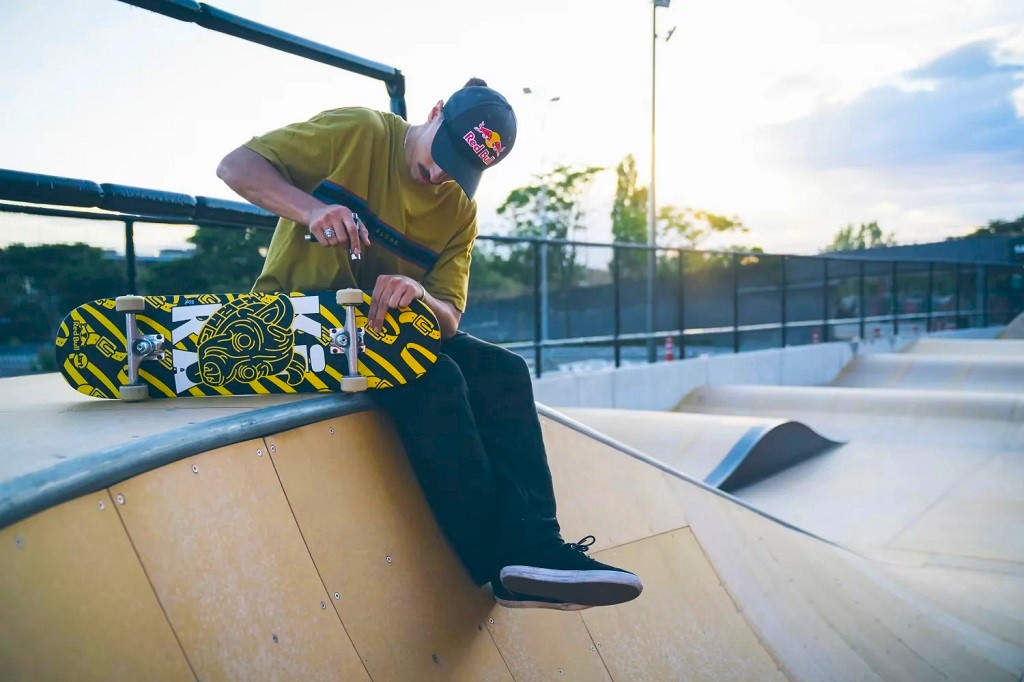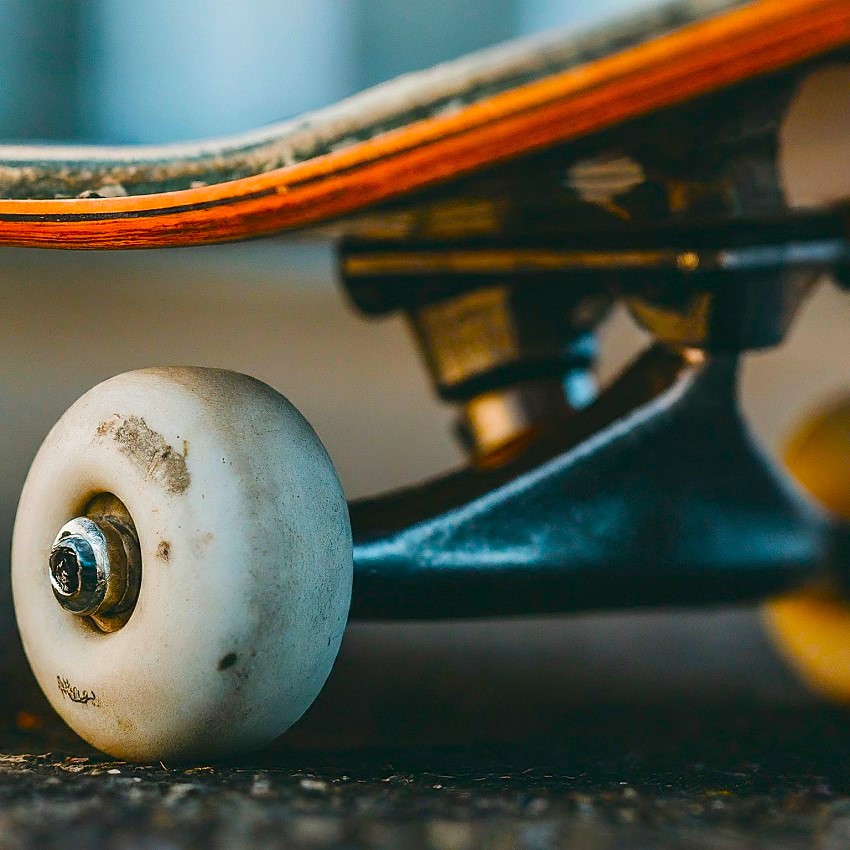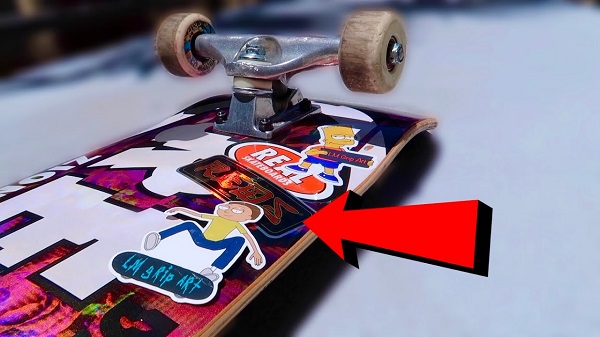The skateboard deck, that unassuming plank of wood with wheels, is a surprisingly intricate equipment. Understanding its anatomy is crucial for choosing the right board and maximizing your performance and comfort while shredding. This guide delves into the key components of a skateboard deck, catering to both newcomers and seasoned skaters alike.
Deck Dimensions
- Length: Skateboard decks typically range from 7.5 to 8.5 inches wide, with longer decks offering more stability and control, while shorter decks provide better flick for tricks. Wheelbase (the distance between the truck mounting holes) also varies with deck length, affecting turning radius and overall feel.
- Width: Wider decks (8.0 and above) are ideal for cruising, providing a more planted platform for pushing and carving. Conversely, narrower decks (7.5 and below) are popular for technical tricks due to their increased flick ability and responsiveness.
Tip for Beginners: If you’re starting, a deck between 8.0 and 8.5 inches wide is a great starting point, offering a good balance of stability and trick potential.
Deck Construction
- Plywood: Most decks are constructed from Canadian maple plywood, offering the optimal blend of strength, pop (rebound), and weight. Higher ply counts (usually 7) indicate a stiffer deck, ideal for heavier riders or aggressive skating styles.
- Concave: The concave shape of the deck, essentially a subtle inward curve, provides leverage for your feet and facilitates performing tricks. Different concaves ( mellow, medium, steep) cater to personal preference and skating style.
Remember: Ply count and concave are interrelated. Stiffer decks (higher ply) often have mellower concaves, while thinner decks may have steeper concaves for a better flick.
Additional Features
- Nose and Tail: The nose (front) and tail (rear) of the deck can be slightly different shapes to influence how the board initiates tricks and handles landings.
- Griptape: The coarse sandpaper-like material applied on top of the deck provides a grip for your shoes.
- Graphic: The artwork adorning the underside of the deck is a way to express your style, but it can also subtly affect weight distribution.
For Experienced Skaters: Consider wheelbase about deck size and concave when looking for a board tailored to your specific needs. Wheelbase significantly impacts turning initiation and stability. Experimenting with different combinations can help you discover your perfect setup.
By understanding these core aspects of skateboard deck anatomy, you’ll be well-equipped to choose the ideal board that complements your skating style and skill level. Remember, the perfect deck is a personal choice – don’t hesitate to experiment and find what feels best under your feet!
Related: Simple Ways To Make Your Skate Shoes Last Longer
Further Exploration:
Once you’ve grasped the basics, delve deeper into specific deck features like concave profiles or exotic wood constructions used in high-performance decks. Remember, safety is paramount – always wear proper protective gear while skating. Now get out there and shred!
FAQ: Mastering Skateboard Deck Anatomy
This FAQ builds upon the information in the previous article, providing concise answers to common questions about skateboard deck anatomy:
Q: What if I have big feet?
A: Opt for a wider deck (8.0 inches or above) for better foot placement and stability.
Q: I’m a heavier rider. Will a thinner deck break easily?
A: Look for decks with higher ply counts (7 or more) for increased strength. These decks might be a bit stiffer, so consider your riding style.
Q: Rocker vs. No Rocker? What’s the difference?
A: Rocker refers to a slight upward bend at the ends of the deck. It can provide a more locked-in feel during grinds and manuals, but some riders prefer the predictability of no rocker.
Q: Does the deck graphic matter?
A: While graphics are primarily for aesthetics, a busy design might affect weight distribution slightly. Ultimately, choose a design you love!
Q: Are there different types of wood besides maple?
A: Yes, some brands experiment with bamboo or other woods for lighter weight or unique flex patterns. Maple remains the industry standard for its ideal balance of properties.
Q: How often should I replace my deck?
A: Replace your deck when it shows signs of wear like cracks, razor tail (worn-out tail), or water damage. For safety reasons, avoid riding a compromised deck.
Q: Where can I learn more about specific deck brands?
A: Visit the websites of popular skateboard brands. They often provide detailed specifications and breakdowns of their deck offerings.
Remember, the best way to truly understand skateboard deck anatomy is to visit your local skate shop and talk to experienced skaters. They can answer your questions and help you find the perfect deck to kickstart your skateboarding journey!




